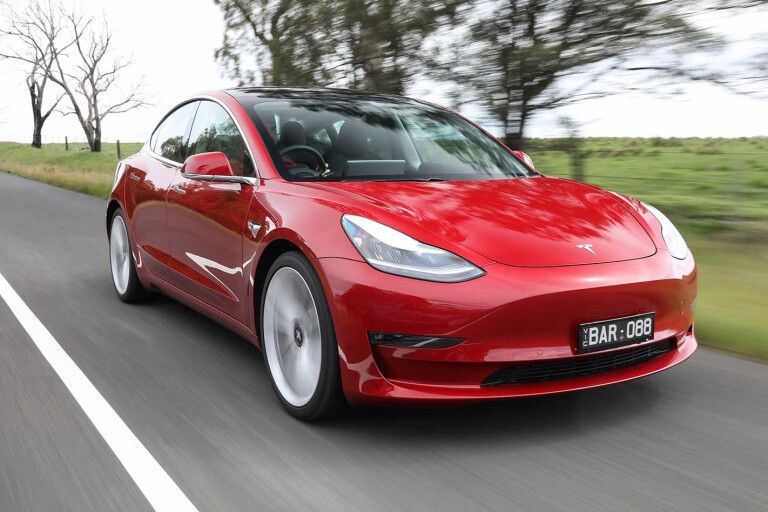
There’s one sure-fire way to get the Teslarati wound up like the electric motors they love so dearly, and that's to suggest that the only performance car Tesla has built to date is the original Lotus-derived Roadster.
“But, but, but,” they splutter indignantly, “the Tesla Model S can hit 100km/h in less than three seconds! And the Model X is the world’s quickest and most powerful SUV!” Both true, but sheer speed isn’t everything; the Shinkansen bullet train can travel at up to 600km/h and handles like it’s on rails (which, being magnetically levitated, it’s technically not), but probably isn’t very engaging to steer.
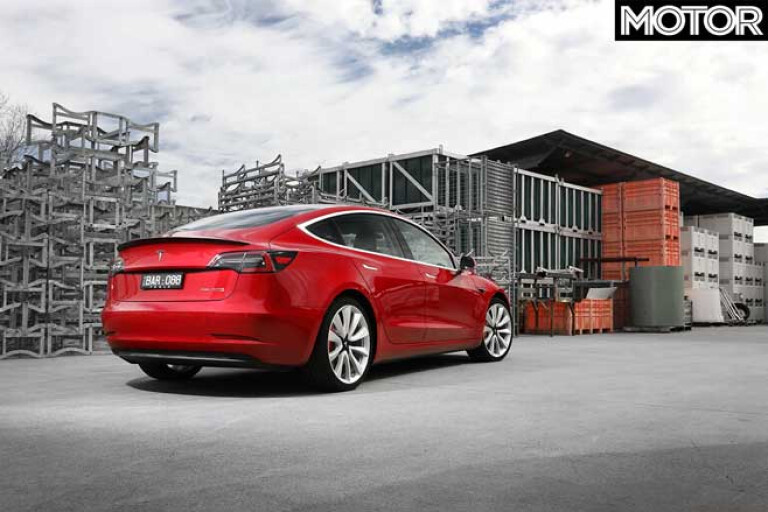
In all seriousness, Tesla’s mass-production efforts thus far have been extremely impressive, but are essentially everyday cars blessed with supernatural speed as a result of their propulsion systems. Once the novelty of the enormous kick in the back has faded – how long that takes will depend on the individual, but it will fade – there’s little left to engage the keen driver. This is not a criticism – the Model S and X have been designed to mobilise the masses, not excite enthusiasts – but now Tesla has a car that intends to do just that.
It all started, as things in Tesla-land often do, with a tweet from CEO Elon Musk. “Tesla dual motor, all-wheel drive performance Model 3,” it began, declaring a 3.5sec 0-60mph (0-97km/h) sprint, 250km/h top speed, 500km range and USD$78K price. “About same as [a] BMW M3, but 15 per cent quicker and with better handling. Will beat anything in its class on the track”. Quite a statement.
In terms of pure numbers, the Tesla team over-delivered on Musk’s promises. The production Model 3 Performance claims to take 3.4sec from 0-100km/h, have a top speed of 261km/h and a maximum range of 560km. The local price starts at $99,554, a couple of options – $2800 for the red paint, and $8500 for the erroneously titled ‘Full Self-Driving Capability’ – taking our test car to $110,854.
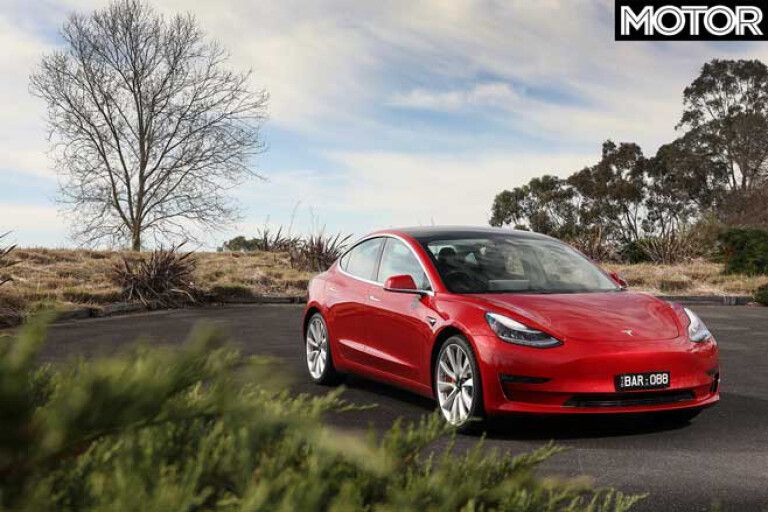
At the heart of the Model 3 Performance is a 75kWh battery pack and a pair of electric motors, a 211kW switched-reluctance unit in the rear and a 147kW induction motor in the front, each powering the respective wheels for all-wheel drive capability. The Model 3 is virtually identical in size to a Mercedes-Benz C-Class bar a little extra width and while being battery-powered brings with it an inevitable weight penalty, at 1847kg the Tesla isn’t overly obese.
A number of kilograms was saved by eliminating virtually all of the switchgear that you’d find in a traditional car. Behind the steering wheel is a pair of wands, one for gear selection the other for the indicators, a couple of buttons on the arm rest to open the doors and control the windows, a pair of rotary dials on the steering wheel and that’s about it. Almost every function is controlled by the giant 39cm touchscreen: lights, wipers, ventilation, navigation, entertainment, drive modes and more are all contained within various menus which, with a bit of familiarity, aren’t difficult to find your way around.
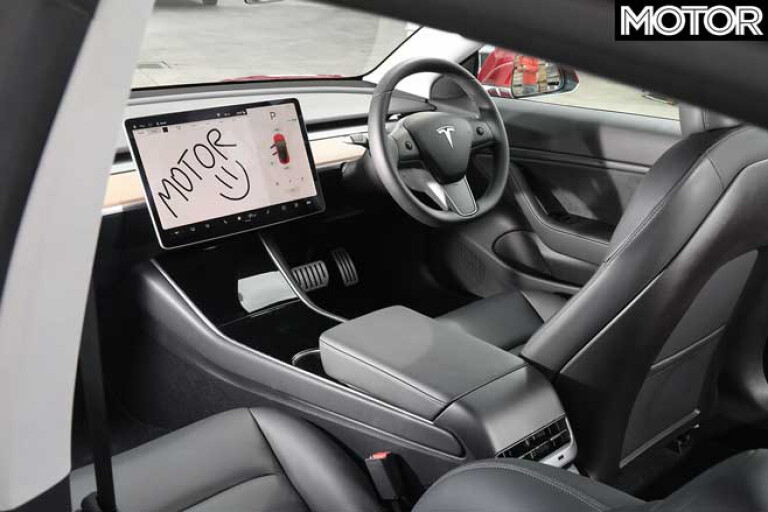
It also replaces the traditional instrument binnacle, your speed displayed in the top-right hand corner of the screen, which presumably makes building left and right-hook versions easier, but a head-up display would be helpful, particularly as there are no tell-tale signs (ie, engine revs, gear selections) to signify you’re traveling at 70km/h rather than 60km/h – not ideal in speed camera-riddled Melbourne.
However, the fact Tesla has made a practical, usable electric cars isn’t news – it’s already proved it can do that. What is up for debate is the second part of Musk’s statement: “15 per cent quicker [than an M3] and with better handling”.
The changes required to turn a regular Model 3 into a ‘Performance’ are surprisingly minor; in terms of hardware it’s merely 20-inch wheels with Michelin Pilot Sport 4S tyres, bigger brakes and a bit more grunt compared to the ‘Dual-Motor Long Range’.

The most important alteration, though, can’t be seen at all. Tesla’s clever software boffins, with help from gun American race driver Randy Pobst, created ‘Track Mode’, a series of ones and zeros that backs off the stability control, regulates battery temperatures for maximum power and adjusts the electric motors to enhance agility and even allow some oversteer.
We’ll get to Track Mode shortly, but first let’s deal with straight-line performance. For years the default question to motoring hacks has been “what’s the best car you’ve ever driven?”, but that’s now been replaced by “Have you driven a Tesla?” and “How fast is it?”.

Performance testing electric vehicles is fraught with difficulty as they are at their quickest with fully juiced batteries, a problem when our usual Heathcote test strip is some two hours north of Melbourne. The last time we did this, with a Model S P100D, it was a full-day palaver, but thanks to subsequent improvements in Victoria’s charging infrastructure and the Model 3’s improved efficiency the Tesla has around 75 per cent battery to play with on the start line.
Once you’ve actually arrived at the drag strip, the process couldn’t be easier. There is literally nothing to do but mash your right foot to the floor and hold on; any attempt to load the car against the brake for a quicker launch is immediately met by an irritable bong. It’s also unnecessary as the instant torque of the elector motors fires the Model 3 Performance off the line with neck-straining force and not a skerrick of wheelspin.

It dispatches with 100km/h in 3.6sec but once into three figures the acceleration notably slows, the quarter mile completed with an impressive 12.02sec but at a trap speed of just 179.83km/h, only a few km/h faster than hot hatches like the Honda Civic Type R and VW Golf R. A key point, though, is that this time is eminently repeatable; in the real world electric propulsion is king, requiring neither a sophisticated launch control system nor any coordination on behalf of the driver.
It also makes for a very relaxing day-to-day driving experience. There’s a bit of road noise, though it’s undoubtedly more noticeable due to the lack of mechanical noise, but the ride is well-damped and the very quick steering is light and accurate. For all the grandiose, headline-grabbing statements made by its boss, it’s clear Tesla has some very talented engineers that know what makes a good car.

I quickly found myself sitting in traffic looking at all the vehicles around me and wondering: “why aren’t they all electric?” Obviously not the occasional Cayman or McLaren or AMG, but all the vehicles whose sole purpose is to transport people or products in quiet comfort: SUVs, buses, hatchbacks.
For most driving, especially in our increasingly clogged city centres, it’s nice not to be sitting still burning fuel for no reason, instead recuperating energy with every lift of the throttle and brake application.
The Model 3 rewards smoothness, not just to maximise range – we averaged about 20kWh/100km in regular driving, giving a real-world figure of about 375km – but to improve the experience. The instant throttle response and strong brake regen means anyone with ‘cabbie foot’ is in for an uncomfortable ride.
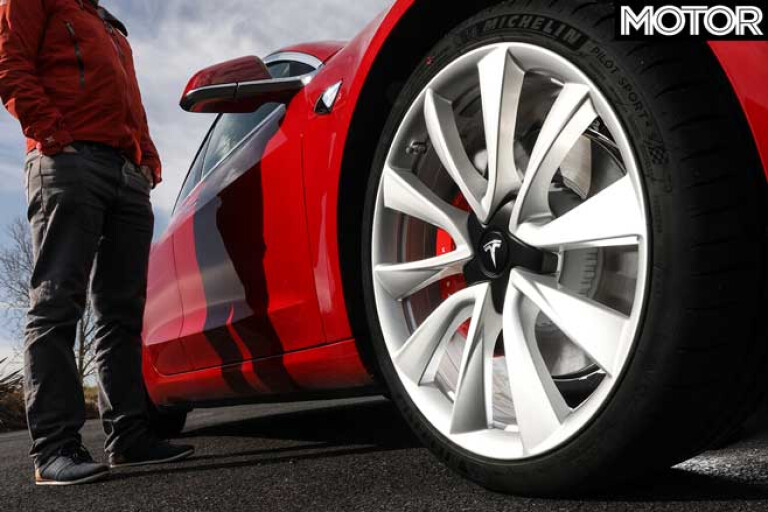
When it comes to going quickly, however, I’ll admit to being an EV sceptic. Outright pace is all well and good, but prior experience suggests that with no engine note, no gears to change, conservative ESP calibrations and strong regenerative braking, there’s little to engage the enthusiastic driver. The Model 3 Performance changes this. Yes, there is little noise and not so much as a paddle to pull, but the combination of its instant punch, clever torque distribution and soft yet balanced chassis makes it genuinely enjoyable to drive hard.
In fact, contrary to the ever-more-capable ranks of hot hatches, sports and supercars, the Model 3 Performance feels perfectly judged for the road. It doesn’t have masses of grip and the soft-ish suspension allows you to manipulate the Tesla’s weight at (relatively) modest speeds using the brakes, steering and throttle, which the electronics will allow as long as you’ve selected Track Mode.
Think of it as a rocket-powered Golf GTI and you’re close to the mark, with added wizardry like the ability to add more throttle in response to understeer, the motors reacting to claw tenaciously into the tarmac.

So far, so good, but can the Model 3 Performance really give a BMW M3 a bloody nose on track? No, not really, but that doesn’t mean it isn’t fun. We just so happened to have an M3 CS present at Haunted Hills hillclimb circuit while testing the Tesla and it’s remarkable how lethargic the BMW’s S55 engine feels in comparison – by the time the M3 has deciphered your throttle input, the Tesla is a car length up the road.
Track Mode does indeed allow oversteer on demand but it’s a bit contrived; the easiest way is to control the entry speed before adding plenty of throttle and riding out the slide, but the ESP is quite inconsistent in what it lets you do.
Which brings us to the main reason Tesla’s M3 can't match BMW’s on track: the M3 CS responds to your inputs, whereas the Model 3 Performance requires you play by its set of rules. It’s like the parameters of performance driving have been programmed into the Tesla’s brain and as long as you stay within the lines it responds well; stray outside them and the Model 3 runs out of ideas.
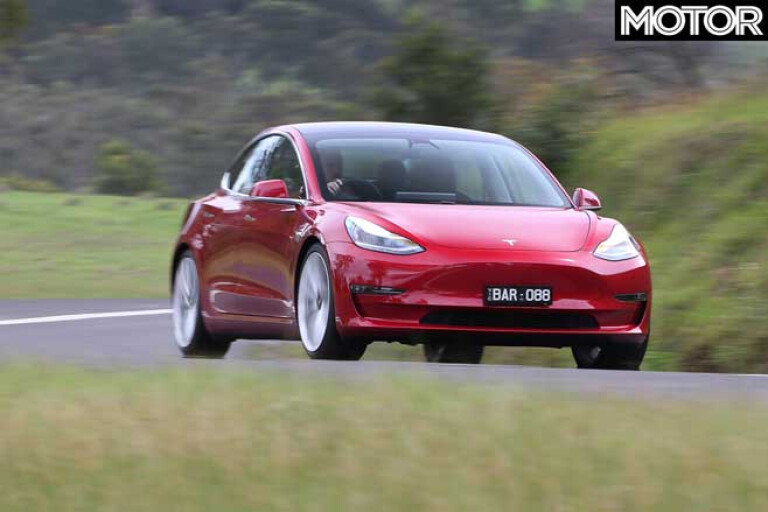
It’s worth remembering that this is Tesla’s first proper crack at the performance game and it’s a very impressive one. Musk made a rod for the company’s back by throwing out the M3 comparison, the two aren’t really competitors. Compare the Model 3 Performance to its actual rivals (which we plan to) like the BMW M340i, Jaguar XE S and Volvo S60 Polestar and it’s likely to be a close fight for the top spot.
It’s certainly difficult to imagine anything matching the Tesla for pure pace, in a straight line or on a twisty road. Personally, for the Performance’s $100K-odd ask I’d have a base Model 3 for daily duties and an MX-5 or 86 for the weekend, but there can be no denying Tesla’s hi-po Model 3 deserves proper performance car status.
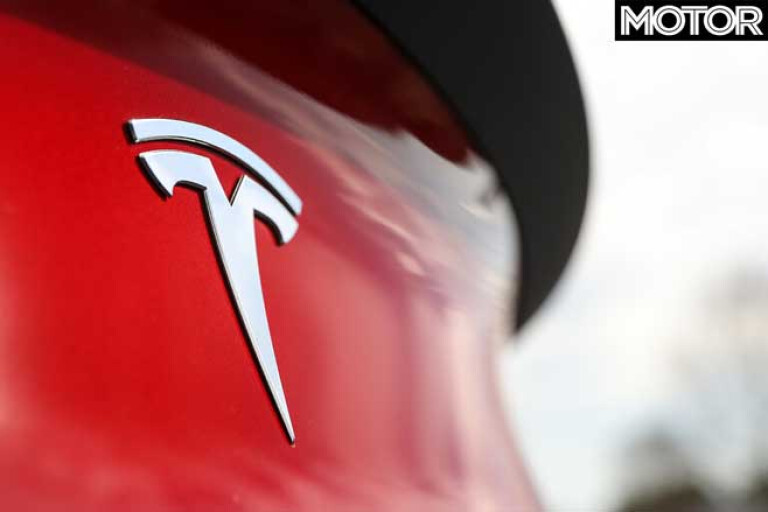
FAST FACTS
2019 Tesla Model 3 Performance
BODY: 5-door, 5-seat hatch
DRIVE: all-wheel
MOTOR: switched reluctance (rear); induction (front)
POWER: 353kW (combined)
TORQUE: 639Nm (combined)
WEIGHT: 1847kg
POWER-TO- WEIGHT: 191kW/tonne
TRANSMISSION: direct-drive
SUSPENSION: double wishbones, coil springs, anti-roll bar (f); multi-links, coil springs, anti-roll bar (r)
L/W/h: 4694/1933/1443mm
WHEELBASE: 2875mm
TRACKS: 1580mm (f/r)
STEERING: electrically assisted rack-and-pinion
BRAKES: 355mm ventilated discs, 4-piston calipers (f); 335mm ventilated discs, single-piston calipers (r)
WHEELS: 20.0 x 8.5-inch (f/r)
TYRES: 235/35 ZR20 (f/r); Michelin Pilot Sport 4S
PRICE: $99,554 ($110,854 as-tested)
PROS: Acceleration; chassis balance; practicality
CONS: Needs to be let off the leash; build quality
RATING: 4 out of 5 stars
The Strip
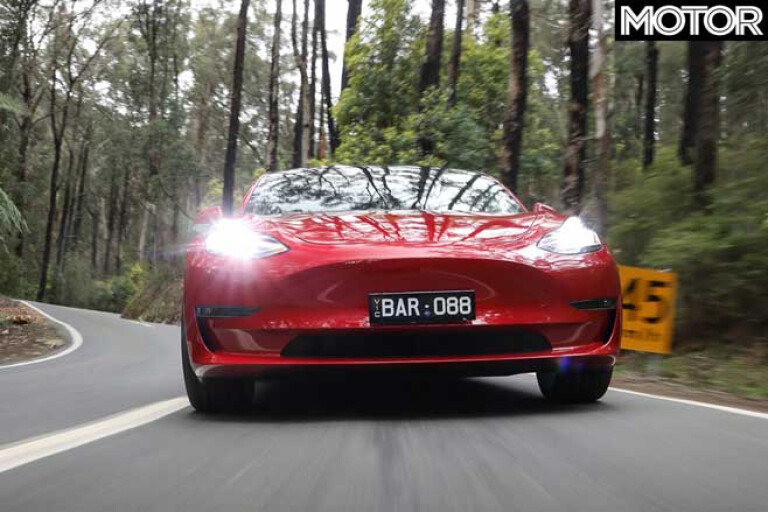
| Tesla Model 3 Performance | |
| 0-10km/h | 0.24sec |
| 0-20km/h | 0.57sec |
| 0-30km/h | 0.9sec |
| 0-40km/h | 1.23sec |
| 0-50km/h | 1.56sec |
| 0-60km/h | 1.89sec |
| 0-70km/h | 2.23sec |
| 0-80km/h | 2.63sec |
| 0-90km/h | 3.08sec |
| 0-100km/h | 3.60sec |
| 0-110km/h | 4.21sec |
| 0-120km/h | 4.92sec |
| 0-130km/h | 5.74sec |
| 0-140km/h | 6.66sec |
| 0-150km/h | 7.74sec |
| 0-160km/h | 8.96sec |
| 0-170km/h | 10.38sec |
| 0-180km/h | 12.05sec |
| 0-400m | 12.02sec @ 179.83km/h |
| 80-120km/h (Drive) | 2.3sec |
| 100-0km/h | 33.61m |
Heathcote, 17˚C, dry. No rollout applied
Driver: Scott Newman
*Manufacturer’s claim
Official timing supplier: www.vboxaustralia.com.au

COMMENTS